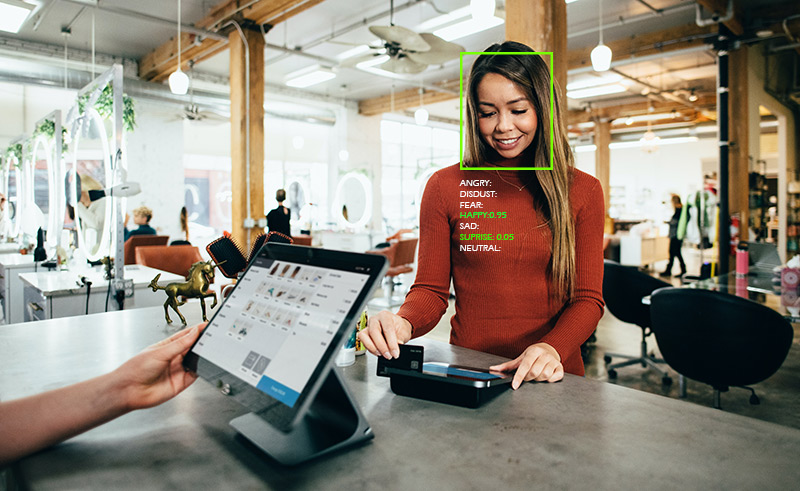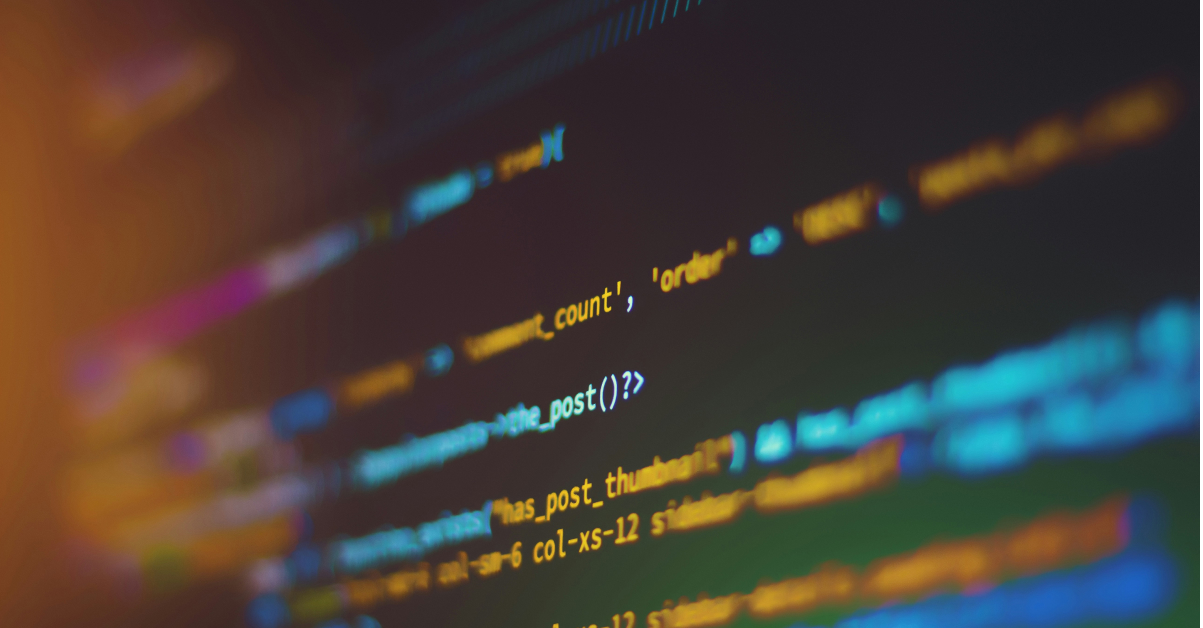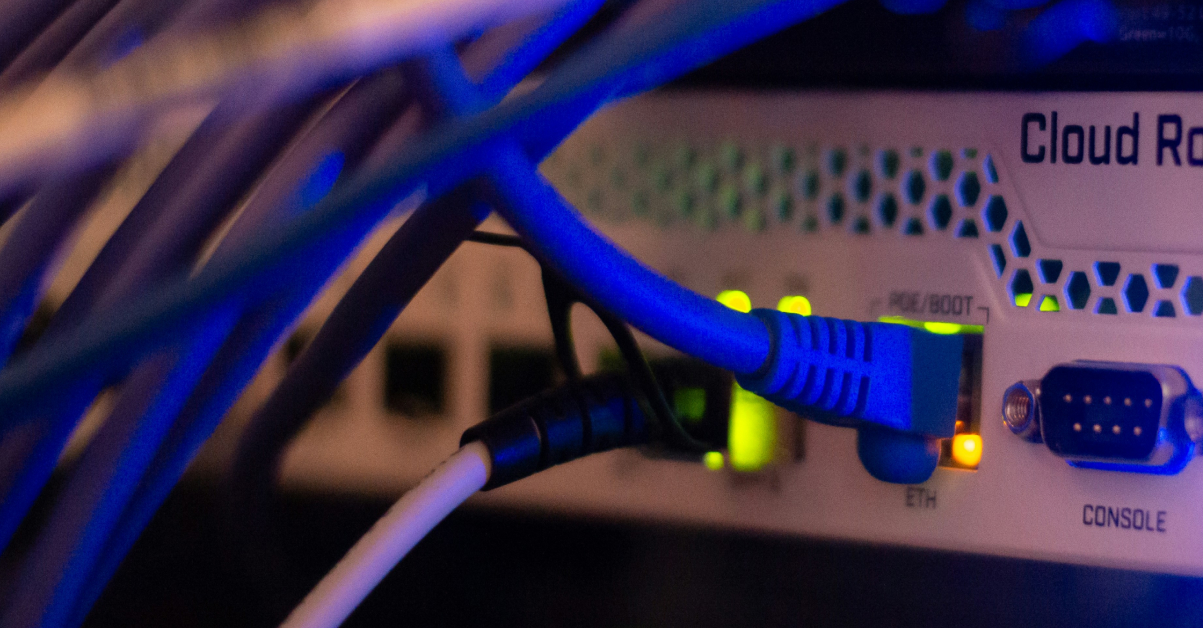Retail is the most popular way of conducting sales and this is not expected to change in the near future. Although we have been observing a dynamic growth of other forms of e-commerce at the forefront for years, nothing can replace the possibilities offered by retail. Direct contact with the product, the possibility to touch the fabric, try on clothes or test the equipment. All this makes hundreds of thousands of people go to the shops every day. However, a customer's visit does not mean selling the goods yet. In the era of huge competition, every entrepreneur dealing with retail trade faces the challenge of interest of a potential buyer and finalizing the transaction. In order to do so, it is necessary to know the customer and his needs. This task is nowadays made easier by computer vision technologies in cooperation with artificial intelligence.
Computer vision - how does it work?
It has been known for a long time that by observing and analysing customer behaviour in stores, information can be obtained to better adapt the offer and optimise the sales process. The result is a mutual benefit - customer satisfaction and seller profit. However, traditional ways of tracking consumer behaviour are not very effective and do not provide sufficient knowledge about the shop's effectiveness. This is of key importance because everyone will choose a retail outlet that is more suited to their needs. The use of the achievements of the computer vision (CV) is therefore now becoming a necessity. These technologies, supported by AI systems and data analysis, allow for the ongoing processing of information obtained by monitoring behaviour.
What is computer vision in the context of this issue? In short, it is a process in which a machine processes and understands visual information. This is roughly similar to human perception. The eyes of a CV are cameras. A computer equipped with the appropriate artificial intelligence acts as the brain of the whole system. The CV can therefore interpret the recorded image.
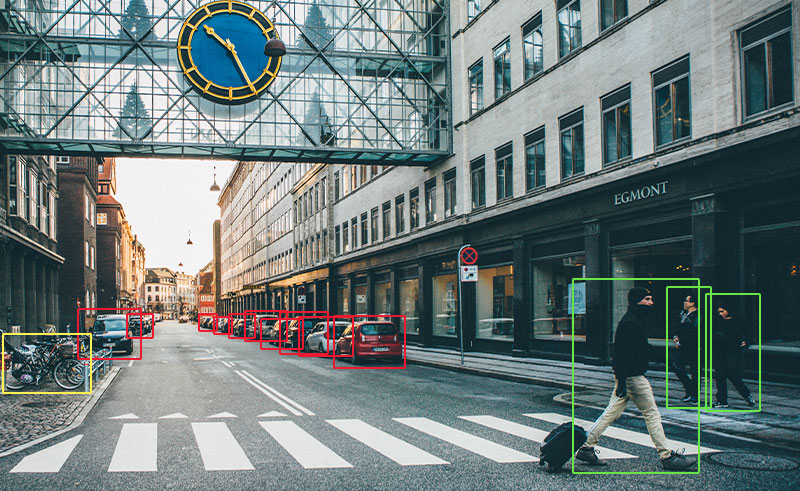
The good news for every seller is that a CV is a technology that in many cases can use the cameras already present in the shop. Of course, it must be compatible with the system used, as well as providing the right image quality and colour. If these requirements are met, then the only issue is to determine the individual needs of the point of sale. At Numlabs we place particular emphasis on this aspect, which is why many of our CV and Artificial Intelligence solutions are unique and "tailor-made" tools for a specific customer. Their use can be very wide. A few examples are given below.
Computer vision in retail - use cases
The applications of computer vision in retail can be divided here for convenience into two groups. The first one is tools to optimize the sales process. The second one will include solutions helpful in profiling and customer segmentation. Of course, both of these zones very often interweave and exchange data.
A popular and very useful application of computer vision from this first group are the so-called "heatmaps". In the case of retail sales, it is a graphic representation of information about customer traffic and activity on the shop floor. The name is derived from the way data is presented by means of colours, where shades of red mark the "hottest" points. - attracting the most attention from customers, while less popular areas are represented by cool colours (blue, green). A typical heat map shows which way consumers move and where they stop most often. At Numlabs we create algorithms that generate such heat maps based on monitoring data. With the help of our solutions, the seller can better manage store space and product placement, facilitate access to the most popular places, or place advertisements and promotions in strategic locations.
Our team is also working on the use of computer vision to create heatmaps that determine the level of popularity of a particular product. Cameras can record, for example, the frequency of contact with the product. A heatmap of this kind provides extremely valuable information. It allows us to react dynamically to customers' interest by ordering more popular products or by supplementing the shop's assortment with similar products.
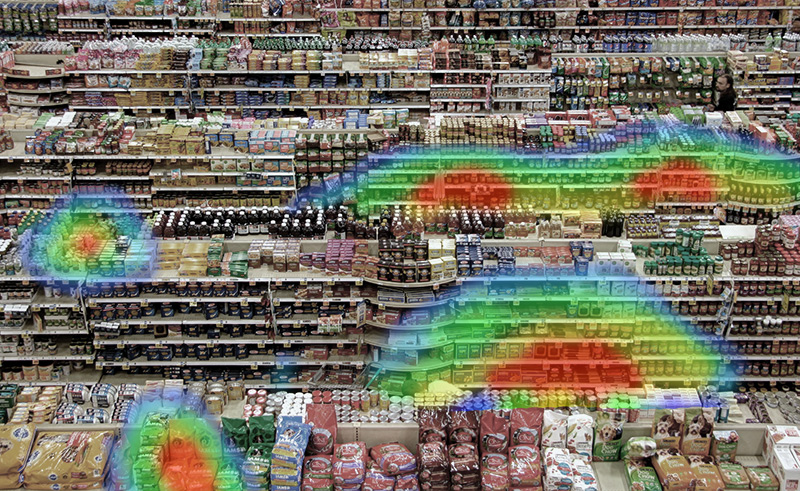
Optimization of the facility's operation is not only about heatmaps. Computer vision can be equally useful for work organisation. Let's imagine, for example, a situation in which we adjust the number of cashiers at the stands depending on the number of customers in the shop at a given moment. Thanks to the computer vision, we can feed the system with appropriate data, which allows us to smooth the process, and this translates into quick service, consumer satisfaction and employees relief. AI's analysis of the data drawn from the image can also be used for planning changes, organizing breaks or ordering deliveries, and it should be remembered that these are only some of the applications. The same is true for the latter group. So let's move on to profiling and segmentation solutions.
Profiling and segmentation
Here the greatest potential of these technologies is revealed. It is about tools that enable computers to recognize and "understand" images sent from cameras. Numlabs creates artificial intelligence capable of creating a client profile on the basis of data developed by the computer vision. This gives knowledge about who actually visits the store. Needless to say, it is of tremendous importance when creating an offer. For example, clothing stores using our solutions can determine the age, gender and clothing style of their customers. In short, Segmentation and customer profiling based on the computer vision allows to reach the target group more efficiently and react almost immediately to their changing needs. In our opinion, this is the best way to win the customer and his loyalty to the store.
Segmentation and customer profiling based on the computer vision allows to reach the target group more efficiently and react almost immediately to their changing needs.
Another chance to improve retail trade is to use the achievements of the computer vision to estimate positions. The development of technology gives the opportunity to "teach" computers to recognize the position of an object relative to the camera lens. This is true, for example, for indoor advertising. Artificial intelligence distinguishes between haven't seen, look at or glimpse, recognizing additionally gender, approximate age etc. This gives an opportunity to check how and on whom a particular spot works, or which part of it attracts the most attention.
On a similar principle as estimating poses, software for recognizing the emotions accompanying the buyer works. Bearing in mind that retail focuses on buyer satisfaction, one of Numlabs' goals is to create the best possible emotional recognition systems. We know that the level of satisfaction gives knowledge not only about the product range but also about the level of service. These are further advantages resulting from the application of computer vision in retail.
Computer vision - benefits for stationary stores
As we mentioned at the beginning, it is difficult to imagine running a competitive retail business today without the use of proper data analytics. The basic benefit for any entrepreneur who decides to introduce his or her CV to his or her stationary store will be a quicker understanding of customer behaviour. Video data analysis makes it possible to determine whether the store responds to the consumer's needs and how the consumer responds to the offer. This in turn affects the determination of conversion rates, i.e. influencing the decisions of a shop visitor.
In the marketing field, the application of computer vision in retail is an excellent example of synergy, as the benefits far outweigh the costs and labour input. The shop, using the data obtained, can create and modify the way of advertising on an ongoing basis, and then measure the effects of the campaign. It is enough to mention the so-called A/B tests allowing to check which of the two ads works better for a given group of clients - only the achievements in the field of CV will give an immediate answer to such a question.
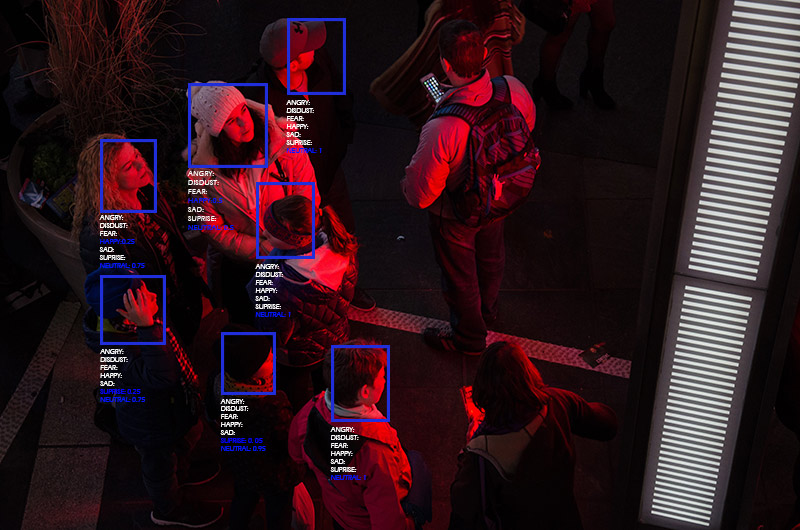
When we observe the behaviour of buyers with the help of a computer vision it becomes much easier to build a pricing strategy. Dynamic pricing does not have to be based only on external analysis. It is the customers themselves who provide us with information about what they are able to pay for directly in the store. Loyalty programs can also be created in a similar way, as well as other activities aimed at attracting and retaining the seller's target group.
Computer vision in retail - privacy and data security
What about privacy and data? This is a question that comes to mind when discussing computer vision in retail. The use of cameras to collect data of people who visit the store is associated with surveillance. Unjustly. Privacy and data security is an integral part of every Numlabs product. Our technologies dedicated to retailers are focused on collecting demographic information, recognizing emotions, level of interest and general trends, without collecting and storing personal data. To put it simply, AI processes an image that allows us to determine that a man in his forties in formal clothing entered the store, but without identifying his identity. Anonymity is therefore guaranteed by design. Moreover, the images of specific people are not recorded. Locally, only information giving the possibility to create a customer profile (age, gender, style of dress, etc.) is stored.
Privacy and data security is an integral part of every Numlabs' product.
Summary
When creating solutions for retailers, we pay attention to each and every entity in the sales process, and security and privacy issues are always closely linked to the project. This holistic approach allows us to create an optimal offer for each stationary store. On the basis of our experience with existing customers, we can certainly conclude that the benefits of using a computer vision in retail benefit both customers, retail stores and their employees.
